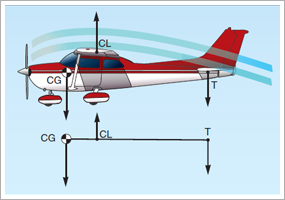| The following stories from the October 9, 2009, edition of AOPA ePilot were provided to AOPA members who expressed an interest in the particular subject areas. Any AOPA member can receive information tailored to their areas of interest by updating their preferences online. - My ePilot -- Helicopter Interest -Carolinas Medical Center selects EC135 helicoptersCarolinas Medical Center’s MedCenter Air in Charlotte, N.C., has ordered three new EC135 helicopters to replace its existing fleet. The EC135s will be delivered this fall and will be customized to meet the specific needs of the MedCenter Air program. The aircraft will serve North and South Carolina, providing 24/7 coverage from three separate bases. Read more >> TRAINING TIPsLongitudinal stability The Oct. 2 Training Tip discussed loading your aircraft to optimize its center of gravity. Don’t just check that the CG is within general limits. A flight to practice stalls or high angle-of-attack maneuvers will be safer, and the aircraft more responsive, with a forward CG. The aerodynamic stability inherent in your aircraft’s design depends on proper loading. Longitudinal stability responds to the position of the CG. What does this mean in practice? “An airplane is designed to have stability that allows it to be trimmed so that it will maintain straight and level flight with hands off the controls. Longitudinal stability is maintained by ensuring that the CG is slightly ahead of the center of lift,” the FAA’s Aircraft Weight and Balance Handbook explains. The CG’s position induces a nose-down tendency, which must be offset by an opposing force to keep the aircraft in aerodynamic balance. That’s where the horizontal tail design comes into play. “It acts behind the center of lift. It uses the fuselage as a lever and pulls the nose up to the desired pitch attitude. The pilot controls the down force, and thereby the airplane's pitch, by manipulating and/or trimming the elevator,” Ed Kolano explained in the December 1996 “ Form and Function.” Sounds good—but wouldn’t it be helpful to see this theory at work? Chapter 3 of the Pilot’s Handbook of Aeronautical Knowledge provides a way: “A simple demonstration of longitudinal stability may be made as follows: Trim the airplane for ‘hands off’ control in level flight. Then momentarily give the controls a slight push to nose the airplane down. If, within a brief period, the nose rises to the original position and then stops, the airplane is statically stable. Ordinarily, the nose will pass the original position (that of level flight) and a series of slow pitching oscillations will follow. If the oscillations gradually cease, the airplane has positive stability; if they continue unevenly, the airplane has neutral stability; if they increase, the airplane is unstable.” Don’t conclude from this that all CG problems stem from rearward loadings. Chapter 8 of the Pilot’s Handbook of Aeronautical Knowledge notes that an excessively forward CG “may result in nose heaviness to the extent that it may be difficult or impossible to flare for landing.” TRAINING PRODUCTS‘The Finer Points’ releases iPhone applicationThe Finer Points of Flying and ForeFlight have teamed up to produce a new iPhone application, VFR Communications. The five-chapter instructional course available for the iPhone and iPod Touch features an hour of high-definition video, computer animation, and instruction from CFI Jason Miller. Content includes airspace dimensions, charting, entry requirements, and real-world cockpit footage demonstrating how a proficient pilot communicates efficiently in complex airspace. It’s available as a $29.95 download at Apple’s App Store at iTunes. You may also purchase a DVD version for $49.95 at The Finer Points Web site.
Note: Products listed have not been evaluated by ePilot editors unless otherwise noted. AOPA assumes no responsibility for products or services listed or for claims or actions by manufacturers or vendors. FINAL EXAMQuestion: I have heard that there are phone numbers available for certain weather stations so pilots can get weather conditions at the airport. Is this true, and if so, how do I find these numbers?
Answer: Automated weather information by telephone comes in handy in many situations. Most airports equipped with AWOS or ASOS have a phone-access feature. The phone number can be found in the AOPA Airport Directory Online or in the FAA’s Airport/Facility Directory. You also can contact a flight service station at 800/WXBRIEF for additional information or assistance.
Got a question for our technical services staff? E-mail to [email protected] or call the Pilot Information Center, 800/872-2672. Don't forget the online archive of "Final Exam" questions and answers, searchable by keyword or topic. |



